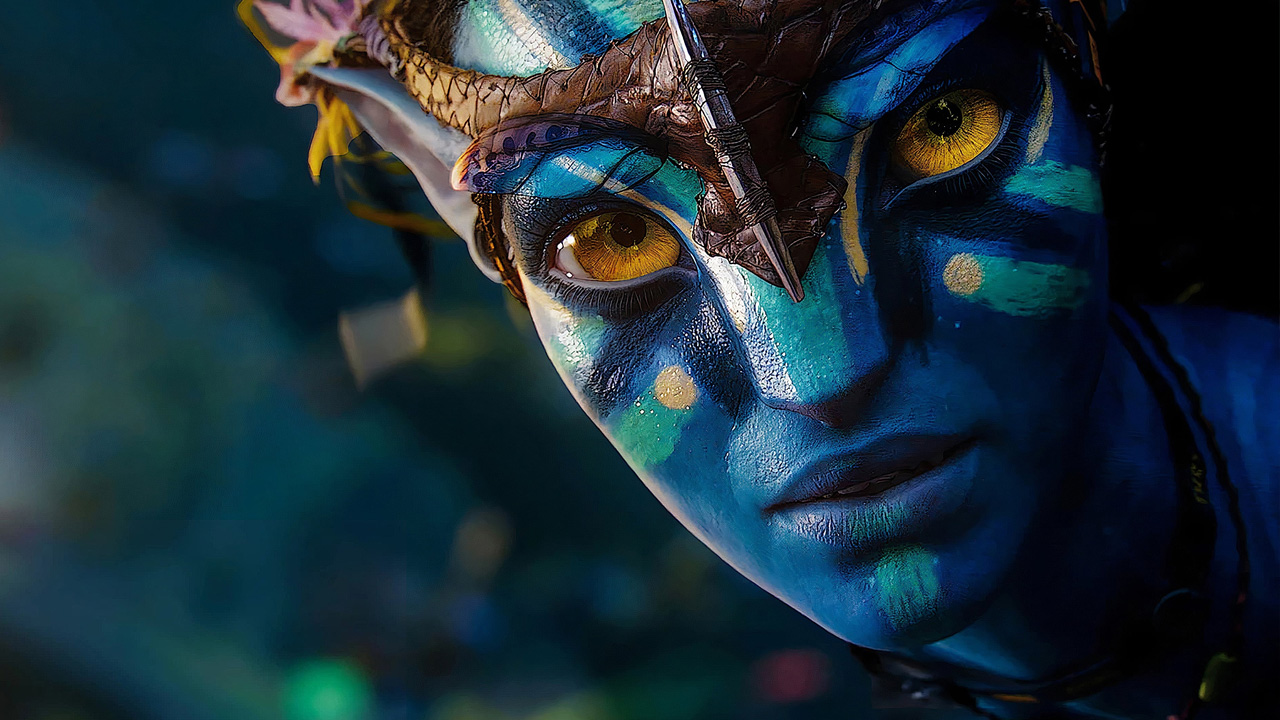Rewatching Avatar: does the 2009 monster hit still hold up?

With 2009’s Avatar enjoying a big-screen re-release before The Way of Water hits cinemas, Daniel Rutledge rewatched the monster hit to see how it’s held up after all these years.
When Avatar first came out in 2009 it was released into a very different world to the one we live in today. Michael Jackson had only recently died. Swine flu was the year’s big scary pandemic, as quaint as that seems now. Barack Obama was inaugurated as US president and the idea that the host of The Apprentice was to be the next one would’ve been very baffling. Facebook was still a fairly new way to share photos and jokes with friends and family, with no sign it would evolve into a primary trigger of the downfall of modern democracy. Only two Marvel Cinematic Universe movies were out: Iron Man and The Incredible Hulk. The most recent Star Wars release was Episode III – Revenge of the Sith.
And James Cameron’s most recent film was Titanic. After that tale of a rich gal and a poor boy shagging on a ship shortly before it sank and killed around 1500 people, Jimbo moved away from feature films and got right into passion project documentaries. Before Titanic, he did more for the action/sci-fi genre than any other person in existence, setting the bar unfathomably high with his trio of The Terminator, Aliens and Terminator 2: Judgment Day. After that incredible run and a few other greats, he switched gears to romantic period cheese and with it made what was by far and away the most lucrative movie of all time, so appeared to be ending on a high.
But then around a decade after he made Titanic, he got into making Avatar. He apparently saw The Lord of the Rings and got all excited about how good CGI had become, so thought trippy blue aliens on a psychedelic blue planet would be all the rage. He also thought the whole world would convert to new digital 3D technology to see them how he wanted us to see them. And somehow, that crazy sonovabitch was right.
I don’t need to go into just how incredibly successful the film was. It broke all kinds of records, it made all of the money, it changed the industry. It went nuts. But it’s developed a very curious legacy in the years since as its inevitable sequels kept slipping further and further and further into the future. Much has been made about how little ‘cultural relevance’ Avatar holds considering what an insane hit it was. People generally don’t dress up as the characters, quote lines from it, or even remember character’s names from it.
I think part of what has made it forgettable is how much of its original appeal was in pure spectacle. We were seeing the best CGI we’d ever seen coupled with new 3D technology that amplified the wow factor in a way that we may remember being an awesome filmgoing experience, rather than remembering very much about the actual film.
So how does Avatar hold up? I rewatched it recently for the first time in several years and certainly didn’t enjoy it as much as I did in 2009, but still found a few things to love. Even stripped of that wow factor it first landed with and watching it in 2D at 1080p on my home TV, there are two major things that make Avatar remain cool: its depiction of future tech and the climactic end battle.
Neill Blomkamp gave us some very good James Cameron-lite, but no one does mech suits and other sweet as future tools quite like the man himself. There’s something about how he grounds it with an industrial, workman feel rather than an ultra-polished sheen that make it so pleasing. In Avatar the combining of future mining tech with future military tech also helps as each makes the other more believable. As for the end battle, well, yep, that shit still delivers. It’s just so thrillingly put together with great, classical David vs Goliath foundations. Although the visual effects have aged, the series of set pieces in the finale hold their own against all the superhero battles we’ve had in the years since and have an advantage over most due to how potent the stakes are.
Right, with the good points out of the way, let’s get into the bad. As awesome as James Cameron is, he’s always had sore points and the more successful he got, the more these were allowed to contaminate the entirety of his films without producers or anyone else reining them in. Principle among them is that he’s just not a very good writer.
Avatar is filled with terrible scripting, like a tree that is home for a tribe of indigenous aliens being called ‘Hometree’ and a mineral that is hard to obtain being called ‘Unobtanium’.
![]()
Everyone’s a silly caricature, perhaps no one more so than Stephen Lang’s hilariously cartoonish military tough guy; but how the fictional alien race draws on stereotypical elements of real-life Earth’s indigenous peoples may be more offensive to many viewers. Culturally and socially, the world is very different now to how it was in 2009 and there would quite possibly be a #CancelAvatar movement if it came out now.
As entertaining as the final humans versus Na’vi battle remains, the earlier scenes centring on alien creatures are far less fun. CGI has improved a lot in the years since and these bits are a bit of a bore now we’ve seen plenty of similar stuff done better.
You know what else has aged like a bag of pipis in the sun rather than a fine wine? Sam Worthington. The wooden Aussie is capable of solid dramatic facial expressions, but things get wince-inducing whenever he opens his mouth. His accent is all over the place, switching rapidly between Australian and various imitation American drawls. Couple his poor execution of dialogue with Cameron’s poor writing of dialogue and a lot of this movie gets tough to stomach when you’re not being constantly wowed by the wonderfully distracting spectacle. “What the hell are you doing, Jake?” he grunts to himself as it’s painfully clear he’s unsure of what he’s doing. “I don’t know who I am anymore,” he mumbles as it’s hammered home repeatedly with the subtlety of a wrecking ball that he’s suffering an identity crisis.
But look, it may be unfair to watch this and expect good writing and performances. It’s ultimately a family movie and it needs to be bone-headedly basic so kids can understand it. And for all the weak dialogue and predictable plotting, the story itself is a timeless, universally appealing tale of good versus evil that is constructed skilfully enough to make it stupendously successful. Whatever issues I have with it or the internet has developed over the past dozen years, it clearly struck a chord with hundreds of millions of people. Some of the reasons it did are just as joyfully clear now as they were in 2009.





















